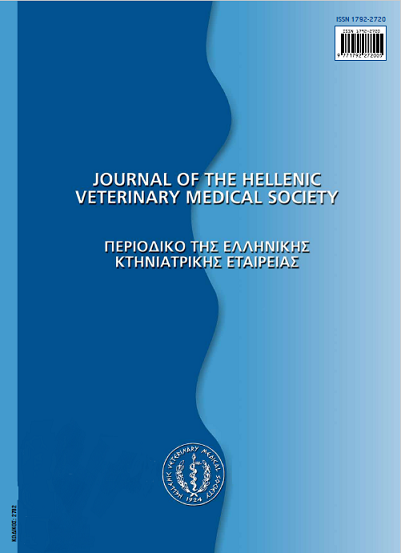Prevalence of leishmaniosis in dogs in Istanbul,Turkey determined by using PCR

Abstract
Leishmania infantum is widespread in Mediterranean countries including Turkey and can cause a serious disease in both humans and dogs. Dogs are considered to be its main reservoirs. The current epidemiological study was carried out in Istanbul for detection of leishmaniosis among dogs. A total of 246 dogs were included in the study. Twenty one (8.54%) blood samples were found to be positive based on PCR diagnosis, using primers specific for the kinetoplast DNA of Leishmania. Infection rate was 6.51% in 169 dogs living in shelters and 12.99% in 77 client-owned dogs. The rate was significantly (p<0.001) higher in the dogs (37.93%) presenting one or more clinical symptoms which may be attributable to leishmaniosis, than in the asymptomatic dogs (4.61%). Eleven (52.4%) of 21 PCR positive dogs presented clinical symptoms whereas the rest of the dogs (47.62%) were asymptomatic. The major clinical sign in PCR positive animals was dermatological problems. Amongst PCR positive dogs, skin lesions were present in 11, weight loss in 2, lymphadenopathy in 2, epistaxis in 2 and lethargy in 2 dogs.
Article Details
- How to Cite
-
BILGIN, Z., TURAN, N., YILMAZ, H., FERROGLIO, E., & TUZER, E. (2018). Prevalence of leishmaniosis in dogs in Istanbul,Turkey determined by using PCR. Journal of the Hellenic Veterinary Medical Society, 66(2), 106–112. https://doi.org/10.12681/jhvms.15616
- Issue
- Vol. 66 No. 2 (2015)
- Section
- Research Articles

This work is licensed under a Creative Commons Attribution-NonCommercial 4.0 International License.
Authors who publish with this journal agree to the following terms:
· Authors retain copyright and grant the journal right of first publication with the work simultaneously licensed under a Creative Commons Attribution Non-Commercial License that allows others to share the work with an acknowledgement of the work's authorship and initial publication in this journal.
· Authors are able to enter into separate, additional contractual arrangements for the non-exclusive distribution of the journal's published version of the work (e.g. post it to an institutional repository or publish it in a book), with an acknowledgement of its initial publication in this journal.
· Authors are permitted and encouraged to post their work online (preferably in institutional repositories or on their website) prior to and during the submission process, as it can lead to productive exchanges, as well as earlier and greater citation of published work.


